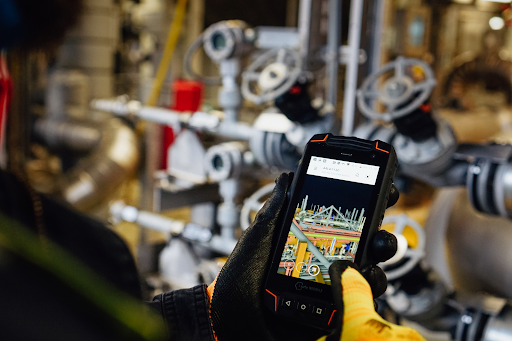By Dr. Paula Doyle, SVP Sales & Marketing, Cognite
The onset of Covid-19 and the subsequent drop in oil prices served as the ultimate stress test for most industrial companies. Suddenly, we were in a situation in which access to sites was restricted, budgets were slashed, and we were still expected to show return on any digital investments previously made.
It was a situation that very quickly and clearly revealed whether those very investments were valuable and future-proof, even in the face of global crisis.
McKinsey has also reflected on this topic, studying how well industrial companies fared during the pandemic. They suggest that the companies that had already scaled digital technologies across their operations were the winners.

On the other hand, the crisis served as a reality check for companies still in scaling mode, and it was a big wake-up call for those that hadn’t yet begun their Industry 4.0 journey by 2020.
More than one year later, I do see a light at the end of the tunnel. Much of the market has emerged from the crisis and are starting to think once again about their long-term, strategic investments. The winners want to keep on winning, and those who faced big reality checks or wake-up calls are ready to go all in towards the digital future.

As the fog of Covid-19 slowly starts to dissipate, this is an opportune time to assess your investments, plan ahead, and make decisions that ensure that your company comes out winning, no matter a sudden global turn of events.
In my company, we have developed a framework to do exactly that for our customers, to help them evaluate the short- and long-term value of their strategic technology investments.

This framework forces us to define a likely business problem, or use case, and then it guides us in how to track value from these investments over time. Here’s a checklist of what you should be measuring:
- Direct financial value: Do revenues increase and/or do opex and capex decline in the use case?
- Organizational efficiency: Is your organization saving time and making processes more efficient?
- HSSE: Is there an impact on the health, safety, security, or environment?
- Sustainability: Can you reduce emissions, reduce chemical use, or minimize your overall environmental footprint?
- Business model disruption: Have you changed something, such as smarter contracts or avoiding vendor lock-in?
- Non-financial metrics: Can you attract the top talents and best partners being the digital front-runner you are?
.jpg)
The above value criteria are only as effective as the use case or business problem to which it is applied. This makes it essential to construct a well-defined case when doing your strategic planning. We have a few hints for what makes a good use case. Ask yourself these questions:
- Does it change a process? The use case should be about how digitalization changes the way of work.
- Does it have an end user? The use case should have an end user who wants to change their way of work, which is realized through the use case.
- Is it the right size? The use case should be defined so that a minimum viable product can be delivered in a reasonable time span, such as three months, and with a clearly defined scope.
The industrial front runners who have come out ‘winning’, as McKinsey describes it, are the companies who realized two key things early on. First, they made sure that their digital solutions were scalable. And second, they focused on enabling the end users, whether it’s the engineers, the data scientists, or the domain experts on the platform.
This experience has taught us that the ability to adapt and even thrive in the face of crisis is not a thing of luck or good fortune. It comes down to forward and strategic thinking about the right investments to build future-proof organization.

